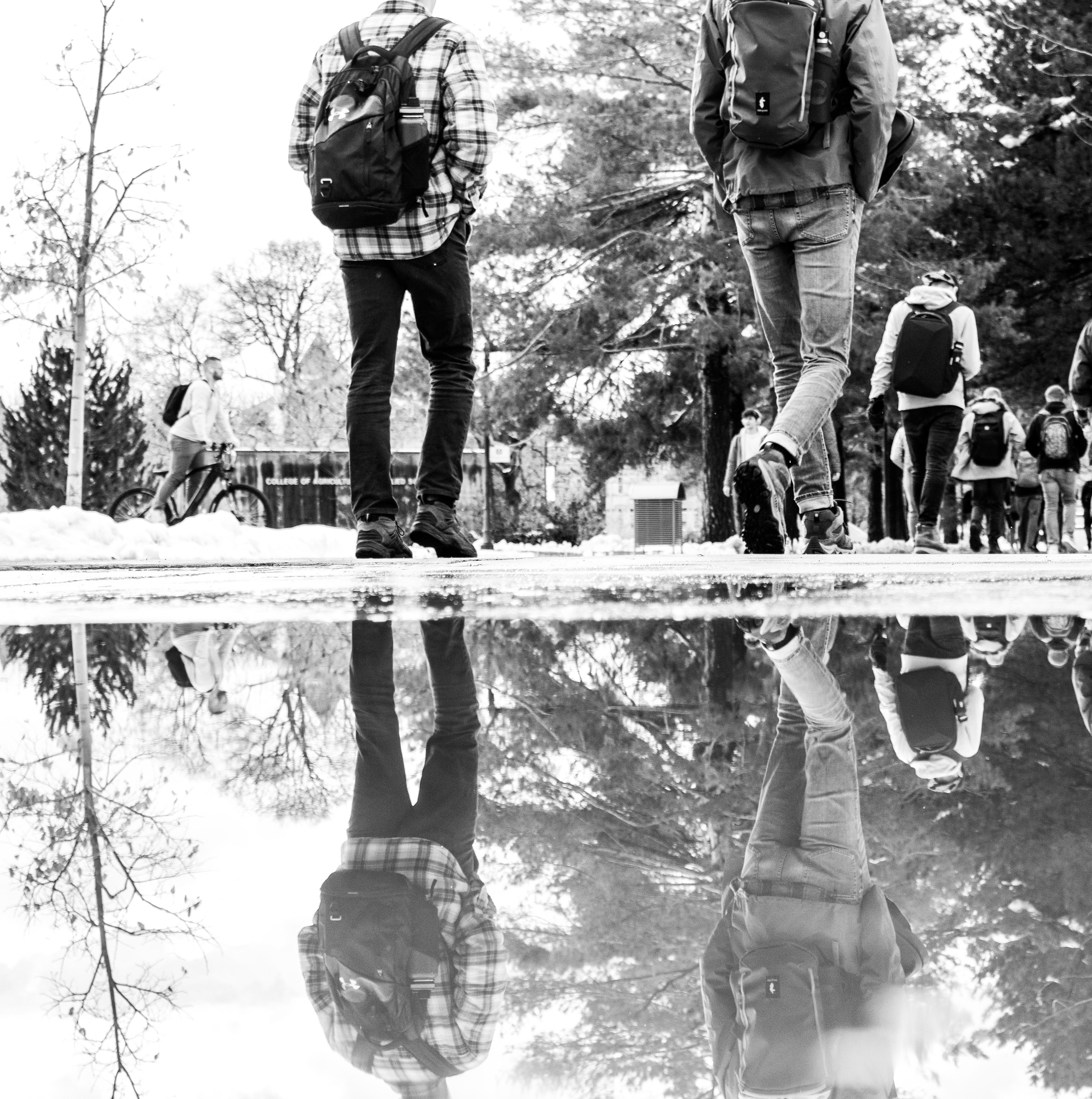

new executive order to ban Tik Tok on state devices
By Jacee Caldwell EDITOROn Dec. 12, 2022, Gov. Spencer J. Cox issued an executive order prohibiting the use of TikTok on all state-owned electronic devices, effective immediately.
The news release announcing the order defined such electronic devices as mobile phones, laptops or any tablets. The statement said state employees with these state-owned devices may not download the TikTok app or access the TikTok website.
TikTok, launched in the U.S. in 2018, is a social media app that allows users to watch and create short videos. The app is owned by a Chinese technology company called ByteDance.
According to the order, TikTok has over 100 million users in the U.S. Because it is owned by a Chinese company, it raises security concerns.

“Chinese national security laws allow the Chinese government to compel companies headquartered in China to provide it with data, which may include the personal data, intellectual property, or proprietary information of users in the United States and Utah,” the order states.
The order also mentioned ByteDance has refused to stop sending data to China or China-based employees.
The ban has been put into effect in hopes of preventing the Chinese government from obtaining confidential information about Utah agencies and/or employees.
“The app is gaining in popularity and the security concerns surrounding TikTok have come to light more recently,” Emma Williams, a public relations officer for Cox, said in an email to the Statesman. “The company has been given the opportunity to improve their security and they have not.”
The executive order also mentioned a list of institutions who are exempt from following the guidelines of the ban. These include: an institution of higher education, the Utah Board of Higher Education, the Utah State Board of Education, an independent entity, the Attorney General’s Office, the Office of the State Auditor, the Office of the State Treasurer, the legislative branch and the judicial branch.
Utah State University is an institution of higher edu-
cation and therefore may still have university TikTok accounts and set their own policies.
However, when the order was initially issued, USU social media director Matthew Gerrish ordered a temporary pause on all USU TikTok accounts, asking them to cease posting until given further clarification.
After consulting with USU legal counsel and Utah System of Higher Education, Gerrish determined USU TikTok accounts were OK to use as long as personal devices were being used rather than university-owned devices.
Gerrish explained TikTok has been a big part of USU student engagement and believes it will continue to be beneficial going forward.
“TikTok has been a valuable component of our social media strategy, as it provides an avenue for the institution to highlight the best of student life at USU,” Gerrish said. “It’s an extra touch point to help Aggies feel more connected to their peers.”
Utah isn’t the first state to issue a ban on the app. According to a map from Government Technology published on Dec. 14, 2022, 19 states had a ban on all state-owned devices, four states had a ban on some stateowned devices and Indiana had filed a lawsuit against the app.
The Indiana state government website explains Indiana Attorney General Todd Rokita filed two lawsuits against TikTok: one for luring “children onto the platform through a variety of misleading representations indicating that the app contains only ‘infrequent/mild’ sexual content, profanity, or drug references — when in reality the app is rife with extreme examples of such material,” and the second for “reams of highly sensitive data and personal information about Indiana consumers and has deceived those consumers to believe that this information is protected from the Chinese government and Communist Party.”
More recently, two more states, in addition to the 19 from the map, have recently issued TikTok bans on state devices.
Business Insider reported New Jersey Gov. Phil Murphy announced a cybersecurity order on Jan. 9, and on the same day, Ohio Gov. Mike DeWine issued an executive order.
In a statement to Insider, TikTok responded to the
orders and said, “We’re disappointed that so many states are jumping on the political bandwagon to enact policies that will do nothing to advance cybersecurity in their states and are based on unfounded falsehoods about TikTok.”
Students like University of Utah senior Jarin Mandros, who said he spends over two hours a day on TikTok, don’t seem to be worried about their personal information being released to ByteDance.
“They will get it from every other social media, so it’s already out there at this point,” Mandros said.
USU student Colin Hastings, who said he spends one to two hours a day on TikTok, was a little more skeptical than Mandros but ultimately came to a similar conclusion.
“It’s customized to what I like, and it learns what I watch and shows me more of that,” Hastings said. “I actually deleted the app for a little bit because of that. Then I decided I don’t have anything to hide. I just don’t care enough to not do it.”
Gerrish said USU will always follow Cox’s orders and take any precautions necessary.
“As conversations at both the state and national level continue regarding TikTok, China and cybersecurity, USU will proceed with caution, complying with any laws or regulations set by elected officials,” he said.
Jacee Caldwell is a senior broadcast journalism student who recently accepted a job with KSL 5 TV. Jacee loves Pepsi, Colorado boys, and cheering for the Denver Nuggets — if the Utah Jazz aren’t playing — to make her boyfriend happy.

USU kicks off 2023 with an earthquake ‘swarm’
 By Carter Ottley NEWS REPORTER
By Carter Ottley NEWS REPORTER
Cache County experienced multiple earthquakes during the first week of January.
The epicenter of the earthquakes was near Benson, Utah. The University of Utah Seismograph Stations reported the earthquakes were a part of a sequence beginning on Jan. 1.
The largest earthquake, with a magni-
tude of 3.2, occurred at 2:44 p.m. on Jan.
3. According to U.S. Geological Survey, around 450 people felt the earthquake. They encourage people to fill out a form on their website if they feel an earthquake.
Ellis Bruch, the Utah State University director of emergency management, said USU Public Safety did not find any damage following the earthquakes.
When an emergency — such as an earthquake — happens at USU, the public safety department does a “windshield survey.” It is a quick run-through of campus to look for any cracks or other damage.
Tony Lowry, a USU geosciences professor, said the cluster of earthquakes is called a “swarm.”
“You have a bunch of little earthquakes that are not following a bigger earthquake,” Lowry said. “It’s very, very rare for swarm activity to lead to a larger earthquake.”
Lowry said fluid flowing within the earth is the cause of an earthquake swarm. The flow can be from magmatic fluids in volcanic areas, wastewater injection by oil or gas companies or deep water production.
Brady Cox, a USU civil and environmental engineering professor, studies how to design and create earthquake-resistant buildings and infrastructure. He said these earthquakes were too small to cause damage. However, older buildings would be at higher risk of getting damaged during an earthquake.
“Any newer buildings have been designed for code,” Cox said. “Old buildings may not have been designed for high
seismic activity.”
Lowry said some buildings on USU’s campus, like Old Main, have been retrofitted to withstand an earthquake better. He said it would take a much larger earthquake to cause damage to the campus. Even without buildings collapsing, people can be impacted by losing power, water or telecommunication.
Bruch said USU is working on response plans specific to each department or building. Around half of these plans are in place, and the university plans for the rest to be in place by next year. They have each employee read and get trained on the plan.
“We focus on the employee piece, kind of as the leaders of the university,” Bruch said. “The design is that if we do evacuate a building, or we have to enact any of these plans, the employees will gather students on their way out.”
“Having these little events like this every once in a while is a nice reminder that we’re in earthquake country,” Lowry said. “You want to be aware of the kinds of things that you should do in the event of an earthquake and the preparation that you should take in advance of an earthquake.”
Bruch suggested everyone can be more prepared for potential disasters by looking at exit signs, having a communication plan, having food and water and knowing the closest sheltering points.
In the event of an earthquake, Bruch recommends to “drop, cover, hold, wait for the shaking to stop and then begin your evacuation out of the building with the safest route possible.”
The Great Utah Shake Out has additional resources on earthquake preparedness.

Carter Ottley is a junior studying journalism and political science. When Carter isn’t writing for the Statesman, he enjoys Chilis, reading and Imagine Dragons. — Carter.Ottley@usu.edu

New snowfall helps Utah
By Jack Johnson NEWS REPORTERThis winter, Utah has received a lot of snow. So far, Beaver Mountain Ski Resort has received 155 inches, and Cherry Peak Resort has received 166 inches since the ski season began, according to their websites.
The snowfall is also helping Utah with its current drought, bringing in the much-needed snowpack which will melt into our reservoirs this spring, according to Jordan Clayton, supervisor of the Utah Snow Survey.
“We’re going to be above normal in all of the basins of the state, which is fantastic,” Clayton said.
Clayton went on to explain the snow, although some may hate the cold that comes with it, is a blessing for the state.
“We’re already up to 133% of our normal snow water equivalent for the state,” Clayton said.
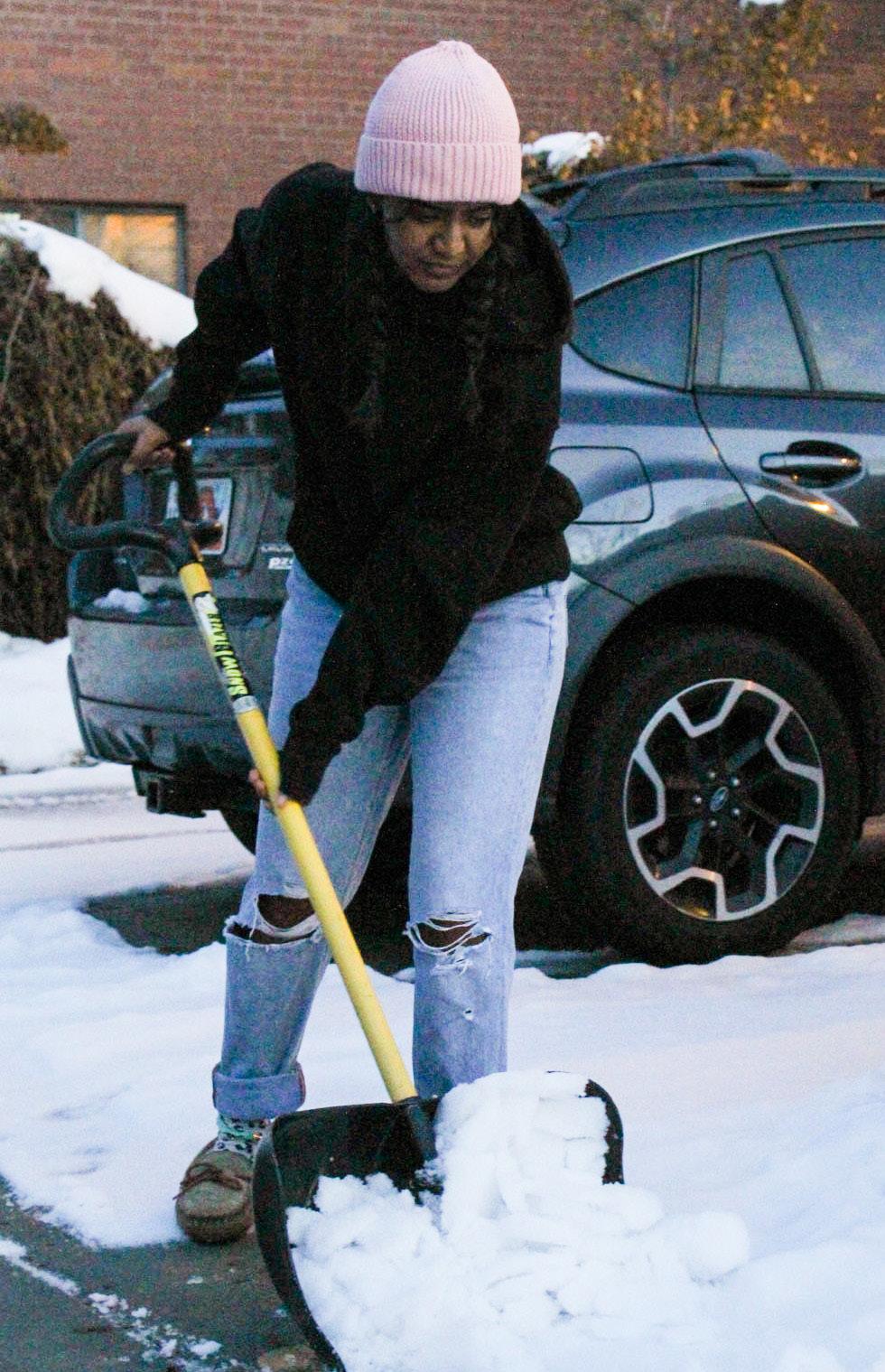
The snow water equivalent is the depth of water that would cover the ground if the snow was in a liquid state.
As of Jan. 8, Logan’s snow water equivalent stands at 157%, based on the median from 1991-2020, according to the United States Department of Agriculture.
According to ABC4, Utah’s most recent drought began in 2019, with half the state declared in a severe drought. This jumped to 93% of the state in severe drought and 84% in extreme drought. The last update on the drought puts 31% of the state in extreme drought.
According to droughtmonitor.unl.edu, Cache County is currently in a severe to exceptional drought.
‘POLICEBLOTTER’
HARASSMENT UTAH STATE UNIVERSITY
DEC. 27 — Faculty member received harassing and threatening text messages from a person believed to be former student who attended USU over four years ago. This case remains active and the investigation is ongoing. No specific threats to the USU community was observed or reported.
CRIMINAL MISCHIEF AGGIE VILLAGE
The drought severity and coverage index, or DSCI, is an experimental way to put all the drought statistics into one simple number. It ranges from 0, meaning abnormally wet or no drought, to 500, meaning exceptional drought. Cache County sits at 300 for the DSCI.
The new snow also brings more chances of car crashes. According to the Utah Highway Patrol, there have been 133 crashes just on Jan. 2 alone, and 450 crashes from Dec. 30 to Jan. 1.
According to KSL News, Sgt. Brian Peterson from Utah Highway Patrol asks drivers to:
- Slow down.
- Increase your following distance.
- Put your phone down.
- Avoid cruise control.
- Avoid sudden braking.
- Remember your four-wheel drive vehicle does not have increased stopping power.
- Bridges and ramps get icy first.
- And buckle up.
There was also a winter weather advisory for Utah, according to the National Weather Service, which was in effect from Jan. 9 at 11 a.m. to Jan. 11 at 5 p.m. However, snow doesn’t just have negative consequences. Ski resorts are greatly benefiting from the storms, and keeping skiers and snowboarders happy. The drought is at bay. —
ALCOHOL OFFENSE CENTRAL SUITES
DEC. 31 — USUPD responded to a domestic violence incident involving a student and their spouse. No assault was reported, but property was damaged during the altercation leading to an individuals arrest for Criminal Mischief – Domestic Violence.

JAN. 8 — Housing staff observed empty alcoholic beverage containers in the trash inside a student housing unit. No criminal arrests were made, but a report detailing those involved was referred to Student Conduct for administrative review.
*If you have any more information regarding these cases, contact the USU Public Safety Department at 435 797-1939. Summaries are from USU Police Chief Blair Barfuss. You can find these and other USU reported crimes at www.usu.edu/dps/police/daily-crime-log
Proposed vaccination bill protects unvaccinated
By Jenny Carpenter NEWS REPORTEROn Dec. 28, 2022, Utah Rep. Walt Brooks filed a new bill, H.B. 131, to make it illegal for any business, government or employer to discriminate against an individual based on their vaccination status.
If an individual is unvaccinated, the bill would prevent government entities and employers from denying “any local or state service, good, facility, advantage, privilege, license, educational opportunity, healthcare access, or employment opportunity” to that person.
Utah State University’s stance on vaccinations has not changed, according to Amanda DeRito, USU’s associate vice president for strategic communications.

“As a state university, USU follows the guidance of state and local health officials, which means we will continue to encourage all recommended vaccinations,” DeRito said in an email to the Statesman.

DeRito also encouraged students to learn more on USU’s COVID-19 vaccination website, vaccine. usu.edu
“COVID-19 vaccines are an important part of controlling the spread of the virus. USU encourages anyone who is able to be vaccinated to do so,” the website said.
Vaccination “very much is an issue of public health,” according to Eli Moss, a USU student and biology major.
Moss questioned the bill’s possible ties to making unvaccinated individuals a protected class.
“From my limited understanding, the basis of the bill is an argument that unvaccinated people should be a protected identity under the Civil Rights Act. My immediate follow-up question would be, ‘Is identity based on action alone?’” Moss said.
Moss said he wasn’t sure if the choice to remain unvaccinated “would be considered equal to the other identities protected by the Civil Rights Act.”
“I think encouraging people to get vaccinations is always really good. I especially love to see people getting information about vaccines in general,” Moss said.
— Jenny.Carpenter@usu.eduGLOBAL ENGAGEMENT

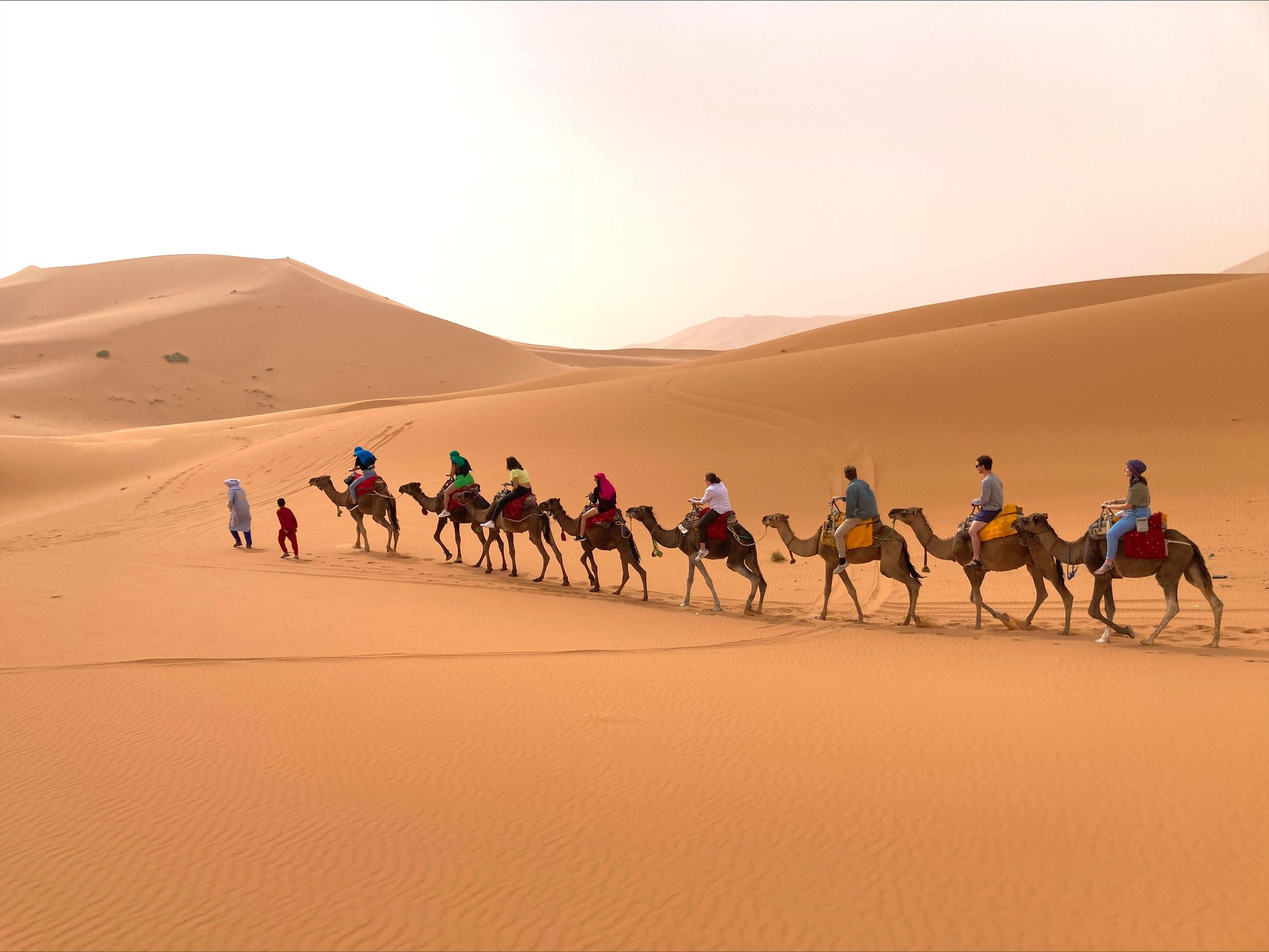
Studying abroad from USU
By Cait Keith LIFESTYLES STAFF REPORTERHave you ever thought about studying abroad but you didn’t know what your options were, or where to start? Lucky for you, Utah State University has resources available to help students find and apply for study abroad programs.
There will be a study abroad fair held on Wednesday, Jan. 18, in the TSC International Lounge from 10 a.m. to 2 p.m. The study abroad advisers, faculty leaders and program providers will be there to talk with students about the programs.
The study abroad department within the Office of Global Engagement has advisers available to assist students. These advisers meet with students to help them find which study abroad options would be best for them and to know what resources are available.
Katie Davidson, a senior study abroad adviser, said advisers have a checklist to go through with students for the first appointment to help them learn about studying abroad.
“That’s been really helpful kind of giving them the basics of study abroad, ‘Here are the things you need to know to get started’,” Davidson said. “We go through how to navigate the websites, and then let them know they can get back in touch with us.”
After the initial appointment, advisers will be there to support the students throughout the application process.
Monika Galvydis, the study abroad director, said she typically finds three ways students benefit from studying abroad.
“Personally, they’re going to come back with a lot of confidence, and know more about who they are and what they want out of their life,” Galvydis said.
Students will also benefit from studying abroad academically and professionally, Galvydis said.
“I can speak to my own experience with study abroad,” Davidson said. “Studying abroad really helped me get out of my comfort zone, become more independent and assertive and learn how to do things on my own. And then professionally, I went into the field of helping other students study abroad, so it impacted me in all those ways as well.”
USU has different types of study abroad programs.
The first is faculty-led programs. This year, there are 22 faculty-led study abroad programs.
“The faculty-led programs are opportunities to go with a group of USU students and USU faculty,” Galvydis said. “So basically USU faculty teach the course, but abroad.”
Some examples of this year’s upcoming faculty-led programs are a Mediterranean diet program in Greece, Christianity and Abolitionism in England, sustainability and peace in Israel and Palestine and introduction to coral reefs in Australia.
USU students can also study abroad through an exchange program.
An exchange program gives students the chance to study and spend a semester or year abroad at one of USU’s partner universities, Galvydis said. At some point, a student from that university comes to study at USU.
USU students have access to the International Student Exchange Program (ISEP), which connects students to universities all around the world, even if USU doesn’t have a direct partnership with them.
Similar to ISEP, the National Student Exchange gives students the opportunity to do an exchange at universities within the US.
Direct programs is another study abroad option.
“Our direct programs, they have programs that are anywhere from a couple of weeks to a semester or a year,” Galvydis said. “Many different places, lots of course options, so that direct option, it really covers everything in between. If you can’t find it in a faculty-led program, or an exchange program, it’ll be in a direct program.”
Studying abroad is an opportunity open to every student. Different programs have varying costs, which make them more accessible to those who may think studying abroad is not affordable.

“I think a big myth about study abroad is that it’s just super expensive, and there are certainly very expensive programs out there,” Davidson said. “But there’s also a lot of really affordable programs, and many of our programs
are based on USU tuition and fees. There’s also lots of scholarship opportunities.”
More information about studying abroad can be found at studyabroad.usu.edu, and study abroad adviser appointments can be made through the website.
“Just to take the leap and do it. I feel like students think it’s not an attainable goal, and it absolutely is,” Galvydis said. “It can be affordable, it can help them progress in their degree, it can help them progress personally beyond what they’ve imagined. Yeah, just go for it.”
Caitlin Keith is from Utah and is currently a junior studying journalism. Other than writing, she enjoys watching and ranting about TV shows or sports, speaking German and eating snacks.
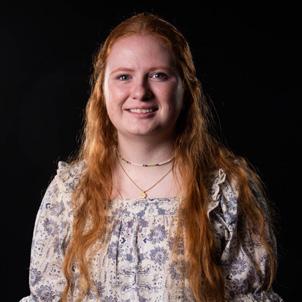
Column: Gender and race classes should be required for university students
By Carlysle Price LIFESTYLES STAFF REPORTERAs a third-year student, I have struggled with my fair share of core classes in order to stay on track for graduation. I fought my way through statistics and forced myself to stay awake through history classes taught on Zoom.
I was told by professors and advisers that although these classes might not be my niche or field of interest, they were necessary to expand my mind, making me a great thinker. And great thinkers become contributing members of society.
But I think becoming a contributing member of society would be better achieved by understanding the society we are a part of. This is why Utah State University should make race and gender classes a requirement for students pursuing all degrees.
This doesn’t mean we should eliminate math and history, but instead add one or two more required classes. Many majors require more credits than the classes available in that major can fill — and this would cover some of those credits and help students achieve broader knowledge.
Francois Dengah, an associate professor of anthropology at USU, said it is the school’s job to teach people how to think and be participants in the global community.
“Part of that is understanding how a lot of the ways by which we sort societies and communities is culturally determined,” Dengah said.
Throughout the United States, universities vary in policy and requirements. For instance, the University of Florida has started pushing the “Stop W.O.K.E. Act.” This prohibits teachings that have to do with things like race, national origin, and oppression caused by any aspect of one’s identity.
Utah is a very red state and may be inclined to follow Florida. But silencing topics that are deeply ingrained in our nation’s history and society is harmful because these identities make up the people who make up our country. There is no single story that identifies everyone. Letting students continue on, oblivious to others’ realities, is to allow a false narrative to perpetuate, creating ideas of otherness and normalcy.
Samantha Yaussy, who teaches in the Department of Sociology and Anthropology at Utah State, said understanding other people’s perspectives and lived experiences creates empathy and understanding.
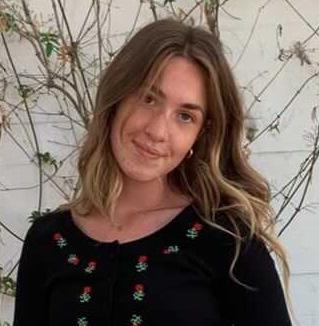
“There are some individuals who are less aware of where we come from and are less willing to understand that the world is bigger than them, and the world is more diverse than them,” Yaussy said.
Becoming aware of diverse experiences is just as important as becoming aware of scientific theories and writing approaches. Giving students these tools
through college courses will help them better move throughout the world, making it easier to make connections and achieve goals.
Having conversations in classrooms made up of students from all areas of study would help get varying identities to the table. Minority and majority students would be able to learn and discuss these sensitive but crucial topics. People from all different backgrounds would participate and share, and wouldn’t have to repeat Dengah’s experience of being the only person of color in the room during a discussion on race. He said being the only minority makes it a different kind of conversation than it would be if there were more diversity in the types of students attending his classes.
Yaussy said she would like to see cultural awareness as part of the required curriculum and feels it is the job of educators to provide the information and research they have on these topics.
If students don’t gain this knowledge before going out into the workforce, they might be responsible for the progression of gentrification and other infrastructural restraints. This includes systemic racism and other constructional violence, according to Dengah.
According to the United States Census Bureau, more than 92% of Cache County residents are white. I wonder how many of those members of my community understand there is no real biological difference between them and the less than 8% of people who don’t fit into the “white” category?
On our campus, it’s the students who are pushing to become social activists. They have created clubs and organizations to promote inclusivity, equality and conversation. These clubs, usually founded by those who fit in the minority, provide education and a safe space from those who don’t understand their story. Despite students’ efforts, it seems they would be more protected if these conversations happened in classrooms as well. This way, information can get out to all students in ways that are civil, factual and have lasting impact.
If Utah State wants to send its students into the world as culturally aware citizens, those grads must have the ability to see others and think outside of themselves. Having knowledge and experience in matters of race and gender is a crucial step in being aware of our own roles and how we impact our society.
Carlysle Price is proud of her extensive magazine collection which has surpassed 50 editions, all of which have been read thoroughly. She would never skip to the cover story.

— A02311769@usu.edu

Hunter Hudson is a senior studying marketing. His show, conveniently named “The Friday Show”, features mostly alternative with some rock and metalcore here and there. Check it out on Aggie Radio every Friday at noon.






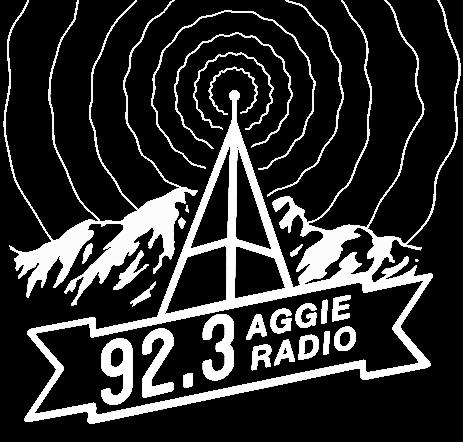
Enemy (with JID)

Imagine Dragons

All I Want A Day To Remember
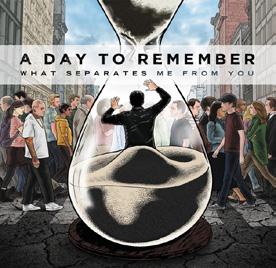
R U Mine?
Arctic Monkeys Fallout Masked Wolf

Martin Luther King Jr. Day: A commemoration
 By Leah Call LIFESTYLES STAFF REPORTER
By Leah Call LIFESTYLES STAFF REPORTER
There will be no classes on Monday, Jan. 16 to recognize and celebrate Martin Luther King Jr. Day.
Officially recognized in Utah in 2000 and previously known as Human Rights Day, the holiday is celebrated annually on the third Monday of January. It acknowledges Martin Luther King Jr. and his role in the civil rights movement in the United States.
MLK Day is a National Day of Service, a federally-designated day that encourages all communities to volunteer in King’s honor.
Utah State University’s Center for Community Engagement and the Division for Diversity, Equity, & Inclusion are participating in MLK Day by hosting events and activities in the days leading up the holiday, including a public commemoration service at St. John’s Episcopal Church on Jan. 13 at 7 p.m.
Gisella Bandley, coordinator for the center, stressed the importance of commemorating King in the local community.
“Everything he did was a defining moment for society, and in honor of him, we want to improve our community as well,” Bandley said.
Brendan Lee, academic adviser and adjunct instructor in the history department, said King was influential due to his nonviolent approach to protest.
“I think that his genius, not only in being such an amazing leader and being able to bring people from different walks of life to the movement, was his approach to nonviolence,” Lee said. “The method of that is trying to grab people’s attention, and to shock them awake, and help them realize the terrible things that were happening and that they needed to change.”
King was at the forefront of the civil rights movement and led protests such as the Montgomery Bus Boycott in 1955 and the Birmingham campaign in 1963.
“He really became a prominent figure in the public scene in the 1950s and ’60s,” said Lee. “The national scene — you know, the television was finding its place in American families’ homes — people were seeing the effects of racism and oppression on a whole new level. It’s different when you can see the effects of that happening. It changes the perspective.”
King burst onto the scene in 1955 after Brown v. Board
— a landmark Supreme Court case that ruled segregation in public schools unconstitutional.
At the time, the state of Utah didn’t have any formal segregation laws, but there were private businesses that participated in discriminatory actions.
According to the Utah Division of State History, Hotel Utah, a prominent hotel in Salt Lake City, refused to allow African Americans to stay there. Lagoon, an amusement park in Farmington, refused to allow white people and African Americans to swim in the same swimming pool.
it seemed, being in this bubble, you think that segregation was only a thing in the American South,” Lee said. “That it was something distant and far away from us, but segregation was a thing in Utah. A really big thing.”

Lee said the civil rights movement didn’t affect Utah as much until the early 1960s.
“1963 was a really critical year for Utah because this was the year that King launched the Birmingham campaign, and Utahns are seeing the Birmingham campaign on TV, and it’s shocking people into understanding the need for change,” Lee said. “Civil rights was a major issue, and they voted to support that.”
The Birmingham campaign, launched in April 1963, fought in support of the integration of African Americans in Birmingham, Alabama.
“The televised view of the events that were going on in the South really changed a lot of Utahns’ perspectives about civil rights, and it was evident in the next presidential election in 1964,” Lee said. “And Utahns chose to support Lyndon Johnson in that election — they voted Democrat.”
Still, Lee said the signing of the Civil Rights Act didn’t solve everything.
“Racism didn’t go away, right? And I think that’s evident by the fact that King was assassinated four years later,” he said.
For more information on the activities and service opportunities planned for MLK Day, visit usu.edu/dei/mlk and usu.edu/servicecenter/mlk-day.
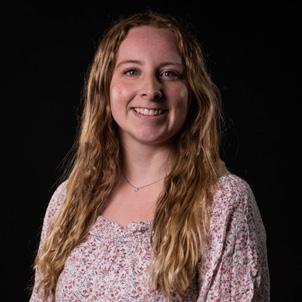
When a blood transfusion needed to be done, hospitals wouldn’t allow blood from a white person and Black person to mix. Towns and city councils would pass housing covenants that did not allow African Americans to settle or buy homes in certain neighborhoods.
“The main issue that King was trying to resolve was the issue of segregation. I remember growing up in Utah, and
@ethn8r
when the salt lake dries up rename SLC to Sjamie Lee Curtis

@sarahclazarus
I do not want to enter my two factor authentication code. I want to feed an apple to a horse
How statistics can forecast “Snowmageddon”
When enough snow accumulates, its weight can pose a risk to the stability of buildings. Too much snow, and it might turn into what Brennan Bean calls “Snowmageddon.”
Bean, a statistician and assistant professor at Utah State University, will give a Science Unwrapped talk about snow statistics on Jan. 20 at 7 p.m. in the Eccles Science Learning Center.
“Predicting Snowmageddon: Using Data Science to Design Against Disaster” is about how statistics can assist in preventing a winter calamity.
“I think about problems where the location of the measurement matters,” Bean said during a virtual interview. “Just like the actual measurement matters. There’s a lot of problems where we don’t really care where the data was taken, we just want to know what the value was.”
Bean said measuring snow in Logan is different than at Beaver Mountain, and it is important to know the geographical differences.
“That applies not only to the snow problem that I’ll be talking about with Science Unwrapped, but with agriculture and climate and water resource management,” Bean said.
Bean said Snowmageddon is “the storm that we have not seen, but that we might one day see if the perfect conditions exist for it to happen.”
“I got that term from a storm that happened, I believe it was 2010, in the Washington, D.C., Virginia area,” Bean said. “They had two storms that were within a week or two of each other.”
The snow from the first storm had not melted by the time the second storm began.
“It caused kind of like, societal chaos in terms of the disruption to power, to roads to a few buildings in terms of collapses, but mostly to power and transportation,” Bean said.
Mary-Ann Muffoletto, the public relations specialist for USU’s College of Science, serves on the Science Unwrapped committee.



“The amount of snow that buildings can handle without collapsing,” Muffoletto said. “This information is used to determine construction standards — safety standards — for buildings.”

Bean and his students study these snow loads.
“I think that we all need to be aware of our environment and changes in the climate,” Muffoletto said. “And certainly, we want to live and work in safe buildings. So, this is an opportunity to understand how science and engineering are used to determine the standards that provide us with safe places.”
Muffoletto said this information can benefit everyday people, not just scientists.
“People are intimidated by science,” Muffoletto said. “They think it’s only for geniuses, and that’s not the case. Science is for everyone. And it’s important to have an understanding of science.”

Muffoletto said Science Unwrapped talks usually last around 30 minutes and they are followed by the opportunity to engage in hands-on learning activities.
“Science Unwrapped is designed for all ages,” Muffoletto said in a virtual interview. “The only requirement is an interest in science.”
Bean said Science Unwrapped is an opportunity to get a high level of understanding about a broad set of topics in a way that is accessible and easy to understand.
“There’s so much information out there in every discipline,” Bean said, “and a lot of that is tucked away in these peer-reviewed journal articles that are meant for technical audiences.”
In his talk, Bean plans on discussing the data science lifecycle.
“This idea that data has a lifetime and that we need to appreciate each phase of its life,” Bean said. “Not just the end report.”
@MNateShyamalan @alicialutes
mario: so you fix the pipes? not travel through them?
plumber: yeah
mario: and what about your nemesis? does he dress like you
plumber: what
Movie Pitch: Jennifer Coolidge and Owen Wilson just saying “wow” at each other.
Bean teaches an intro-level class called Foundations of Data Science.
“I feel really strongly that basic data literacy is becoming as important as reading and writing is,” Bean said. “That in order to navigate our modern world, we have to understand at least at a basic level how data is used to craft our decisions.”
@zachsilberberg
british people are right. what IS all this then?
USU Football alumni’s 2022-23 NFL seasons
By Nathan Dunn SPORTS REPORTERFormer Utah State Football players made breakout plays, joined new teams and continued their roles this season in the NFL. The following is a recap of the 2022 regular season for Aggie alumni.

Bobby Wagner:
Linebacker Bobby Wagner has been known as one of the top NFL linebackers since he left Utah State and was drafted by the Seattle Seahawks in the second round of the 2012 NFL Draft. After nine years with Seattle, Wagner entered his first season with the Los Angeles Rams following their 23-20 Super Bowl win over the Cincinnati Bengals in February 2022. In 17 games with the Rams, Wagner led the team with 140 tackles, two interceptions, five passes deflected, and 10 QB hits. These stats accompany his career-high and team-high record of six sacks, as well a blocked field goal where Wagner hurdled Tampa Bay’s offensive line to block placekicker Ryan Succop.
Wagner signed a five-year $50 million contract with the Rams, which he negotiated himself shortly after the Seahawks cut him. He has had eight Pro Bowl appearances, six first team All-Pro selections and two second team All-Pro selections, and he led the NFL in tackles in 2016 and 2019 with the Seahawks. In 2023, the future Hall of Famer will be entering his second season with the Rams, who went 5-12 this season.
Deven Thompkins:
Wide receiver Deven Thompkins was one of the stars of the 2021 Aggie football squad. He signed as an undrafted free agent with the Tampa Bay Buccaneers following the conclusion of the 2022 NFL Draft. Thompkins performed well in training camp but was cut and assigned to the practice squad.
Thompkins was elevated by the organization on Dec. 23 and made his NFL debut against the San Francisco 49ers as a punt and kick return specialist. In the regular season, Thompkins had 12 kick returns for a total of 263 yards with a 54-yard long return. In punts, Thompkins had six returns for 61 yards.
Thompkins also got to catch passes from Tom Brady. He had 5 attempts for 32 yards and had two carries for 26 yards. Thompkins and the Bucs made the playoffs and battled the Dallas Cowboys this past weekend.
Jordan Love:
Quarterback Jordan Love continued his backup role to future Hall of Famer Aaron Rodgers this year. However, Love did see time during the season. His best outing came against the Philadelphia Eagles, where he totaled 113 yards and a touchdown on six completions.
Love’s total season stats were 14 completions
on 21 attempts for 195 yards and a touchdown. He also had a QBR of 82.4 and an RTG of 112.2 in his four appearances.
According to multiple reports, there is speculation among the league that Rodgers is considering retiring or going to a new team, which could open an opportunity for the 24-year-old Love this fall.
Zach Kruse, the managing editor of The Packers Wire, said Love potentially was the most improved offensive player for the Packers in 2022.
Love and the Packers failed to make the postseason for just the fourth time in Rodgers’ tenure.
Nick Vigil:
Linebacker Nick Vigil only appeared in four games for the Arizona Cardinals before suffering a hamstring injury and was listed on the injured reserve, where he ended his season. In those games, Vigil totaled 13 tackles and one pass deflection.
Vigil was selected by the Cincinnati Bengals in the 2016 NFL Draft and in four years had 182 tackles, two sacks and two interceptions. He saw time with the Chargers and Vikings before signing with the Cardinals in 2022.
Jalen Davis:
Cornerback Jalen Davis entered his third year with the Cincinnati Bengals coming off the team’s Super Bowl appearance last season. Davis typically sees his time with the Bengals’ special teams unit. This season, Davis totaled two tackles and a fumble recovery in 13 appearances.
Davis and the Bengals made back-to-back playoffs and took on the Ravens in the Jan. 15 Wild Card Round.
Dallin Leavitt:
Safety Dallin Leavitt is playing in his fifth NFL season and his first with the Green Bay Packers. After spending four seasons with the Raiders, Leavitt signed a one-year restricted free-agent deal with the Raiders that had him set to make $2.4 million before he was cut. Leavitt played in all 17 games, mainly on special teams, and totaled 13 tackles.
Patrick Scales:
Long snapper Patrick Scales finished his eighth season in the NFL and appeared in all 17 games as the Chicago Bears’ long snapper. Scales has appeared in 105 total games in his NFL career.
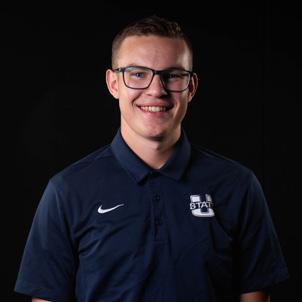
Tyler Larsen:
Center Tyler Larsen played in his seventh NFL season and second with the Washington Commanders. Larsen served as the backup center but started in seven games while the starting center, Wes Schweitzer, was injured. Larsen suffered a season-ending injury in week 13 after dislocating his kneecap and was placed on the IR.
Tipa Galeai:
Linebacker Tipa Galeai entered his third season in the NFL. He was placed on IR in week five and did not return this season. Galeai has totaled 13 career tackles and a sack in his three years with the Packers. In March, he will become a restricted free agent on an expiring deal, which means he will most likely be signed on a minimum deal.
Practice Squad players:
Wide receiver Derek Wright was cut by the Carolina Panthers and signed as an undrafted free agent. He spent the entirety of the 2022 season on the practice squad.
Running back Darwin Thompson spent all of the 2022 season on the Chiefs’ practice squad. Thompson spent two seasons with the Chiefs and helped them win the Super Bowl in 2020.
Dan Akin’s return to form
By Jake Ellis SPORTS EDITORForward Dan Akin slammed a one-handed jam into the hoop at the Dee Glen Smith Spectrum to put Utah State Men’s Basketball up 75-50 over Wyoming on Jan. 10. His athletic dunk drew cheers throughout the arena, and Akin’s teammates all jumped to their feet from the bench to celebrate the highlight.

But for a while on Tuesday, it didn’t seem like Akin would even play in the second half.
After setting a screen near the end of the first half, Akin fell to the ground clutching his left knee. He was able to limp off the court under his own power but head coach Ryan Odom, among others, was concerned.
“I was concerned because Dan’s had a knee injury,” Odom said. “Whenever he goes down with that, he gets nervous, and certainly, I know him extremely well, and so I get nervous too.”
But when the Aggies trotted down the tunnel to the court after halftime, there was Akin, ready to warm up. And when he hit the court, Akin went off. He dominated in the paint, securing nine rebounds and 12 points in the second half alone, pushing him to his fifth double-double of the year with 16 points and 15 boards.
“I think you saw what Dan can do with a little bit of room in there,” Odom said. “He was able to come up with a big game.”
It was a refreshing turnaround for Akin and the Aggies, who struggled at Boise State the game before. At Extra Mile Arena, it seemed Akin let his emotions get the best of him.
During the first half, Akin repeatedly felt like he was being fouled by Boise State without calls from the officials. Later on, Bronco Max Rice and Akin got tangled up during a screen and squabbled, resulting in both players receiving technical fouls.
“Technicals are not what either team wants,” Odom said after the Boise State game. “We have to be better than that. Obviously, (Leon Rice) is going to talk to his team, and I’m going to talk to my team about that. It’s just not OK to react inappropriately to competition like that.”
Playing against Wyoming, it seemed Akin had learned his lesson and moved on.
“I was proud of his response,” Odom said. “He was not himself the other night. Tonight he was. He was much better.”
Akin responded to the Cowboys with flashy dunks, tough defense and gritty rebounds. He moved past the injury and emotions from the game before and focused on guarding Hunter Maldonado — who Odom called Wyoming’s best player.
Odom said Akin did a “really nice job” defending the First Team All-Mountain West guard, forcing him to shoot tough shots all night.
“Definitely a good match-up,” Akin said. “I can hold my own in the post.”
The defensive effort from Akin, guard Sean
Women’s
Jan. 16: @ Fresno State
5:30 p.m., Fresno, California
Jan. 19: vs. Air Force
6 p.m., Dee Glen Smith Spectrum
Jan. 21: @ San Jose State
3 p.m., San Jose, California
Men’s
Jan. 17: vs. UNLV
7 p.m., Dee Glen Smith Spectrum
Jan. 21: vs. San Jose State
4 p.m., Dee Glen Smith Spectrum
Tennis

Men’s
Jan. 20: @ Oregon
11 a.m., Eugene, Oregon
Bairstow and other Aggies kept Maldonado to 20 points — the same total he put up against No. 23 San Diego State the week before.
To close out the night, Akin punished the rim again. He got elevated for a two-handed dunk to finish an alley-oop from Bairstow in the final minutes.
Akin will face his next tests in the paint this week as the Aggies host UNLV and travel to San Jose State.
Jan. 22: @ Portland
Portland, Oregon
Track
Jake Ellis is a senior from Orem studying journalism. When he’s not covering the Aggies, Jake calmly explains how the 1994 film “Angels in the Outfield” is the best baseball movie of all time. —
Jan. 21: Mark Colligan Memorial

Rebecca Sweeten, a sophomore at Utah State, eats her lunch in The Forum Cafe. Sweeten says the coolest thing she has done in school is create a sailboat in one of her mechanical engeneering classes. The sails ended up not working great, but they were able to make the boat move with the rudder as a makeshift paddle.

Taters and his owner, Garrett Porter, play in the snow on the Quad. Porter, a junior at USU, says the craziest thing he has experienced during college is seeing the school spirit students have at events like True Aggie Night. He really enjoys all the school traditions and meeting new people.

Ashley Moncada talks to the USUSA Events volunteers about Welcome Back Week activities on campus. At the beginning of the year, Moncada and some friends had a marathon of parties to go to, such as a mac ‘n cheese party, and a white lies party. She and her friends attended all the parties in one night and made new friends along the way. Moncada says this was the craziest experience she has had while at college so far.
Paige Johnson is a junior in the broadcast journalism program. She loves arts and crafts and believes she can achieve anything on the first try.


— A02332526@usu.edu
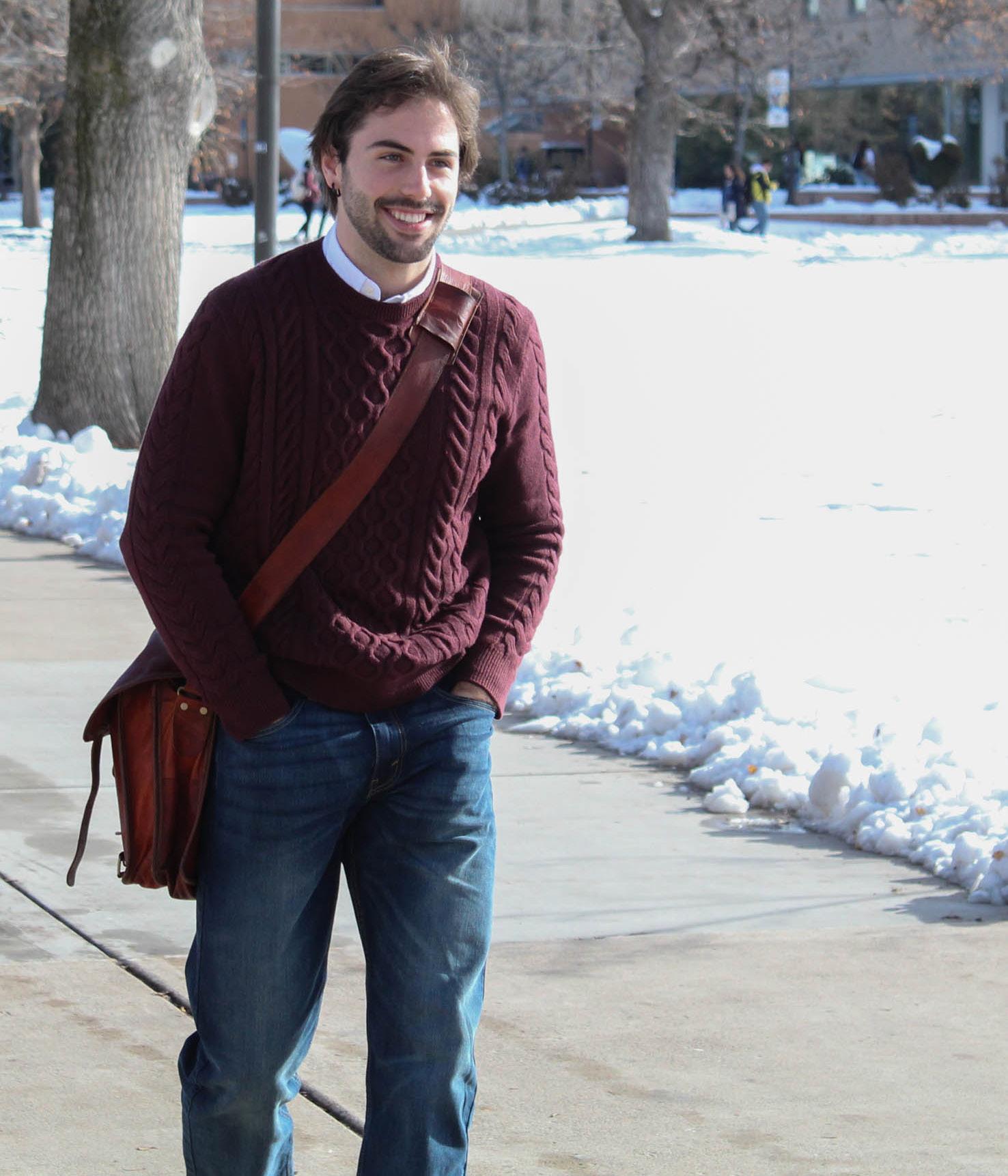

Dittman: College students: Your gut is on your side
You live away from home now, studying for yourself, working for yourself, stressing for yourself. A poor, albeit cheap, diet isn’t helping, Oh–and you’re paying for all of it. But just because there’s a financial burden, doesn’t mean your body has to take the same hit. Introducing probiotic-rich foods gifts your body the ability to combat factors putting a strain on your physical– and also mental– wellbeing. Doing everything from strengthening your distress response, to your immune system, your gut microbiome (bacterial colonies in your colon, large and small intestines, and the stomach) can elevate your life as a college student, without breaking the bank.
By consuming live, healthful bacteria (probiotics) you are creating what is known as a “gut-brain axis.” This partnership between your brain and intestinal tract affects your ability to facilitate stress signals. Stress affects 97.8% of university students’ mental health, so chances are, you’re afflicted by it as well. So why not adopt a support system from within?
In a study by Leiden Institute of Brain and Cognition, half out of the 40 young, healthy adults sampled were given probiotics in powdered form every night. After four weeks, those given probiotics had shortened cognitive reactions on a depression-sensitivity scale when induced into a sad mood compared to those consuming placebos. Patients' diets were not monitored outside of the laboratory, however the results are significant nonetheless.
Even mice reveal the influence of healthy levels of gut bacteria on mood, observed when researchers separated rodent patients into a sterile environment (no bacteria), or a “normal” environment. The study concludes the germ-free subjects “...showed exaggerated physiological reactions to stress compared to normal controls.” Healthy responses to the same stressors were achieved when bacteria
was reestablished internally. This may be due to the regulating properties held by some bacterial strains for cortisol, the stress hormone.
So you’ve found a friend in your microbiome which will help ensure you are in good mental condition for finals, but what about the post-semester flu? By upkeeping the same habit of probiotic consumption, your teaming-with-life organs can help lift you out of your sickened state quicker than those with less active microflora. According to Harvard’s School of Public Health, microbiota can stimulate the immune system, aiding in catabolizing toxic food substances. Several bacterial strains even fight harmful pathogens carried into your body by infected drink or food. Staying healthy allows for better class attendance, and a workload you don’t fall behind on. But even social benefits result from a quicker recovery: more time for basketball games, more time sledding down Old Main Hill, and more time with friends. Partaking in food items which serve as probiotic vessels may limit your time spent caged in your tiny dorm, feeling like it’s shrinking by the hour. So how can you ingest these powerful little organisms? I believe fermented food is the ideal method– it’s easily found and can take no
preparation. Strategically aging food has been used for preservation for thousands of years so it keeps longer (fewer trips to the grocery store)! Winco Foods at 1341 Main St. has several items under $15 that will deliver the same benefits without increasing the 83.3% of students who admit financial struggles are their largest stressor, including PATCH Bavarian sauerkraut, Boursin Cheese, Nancy’s yogurt, and Nasoya kimchi. Author Maja Sikic-Pogacar and collaborators note that the variation in microorganisms contributes to unique “...flavors, textures, and nutritional profiles...” so you never have to tire of a monotonous taste.
College students, be on the lookout for items labeled with “live cultures,” for it could be the cheap method of reducing stress and illness you were looking for. Your microbiota network is individual to you, and so is your experience in higher education. I have felt fulfilled myself after I began integrating fermented, probiotic packed sources into my everyday diet. So support yourself, support your gut!
Happy Munching, Mary Dittman
Mary Dittman is a Utah State student who has found healing and enjoyment in nutrition and preparing nourishing, traditional food. As a history major pursuing a biology minor, Mary is particularly interested in where the past and food intersect.
 — maryisadittman@gmail.com
— maryisadittman@gmail.com
Marchant: Keep corporations out of your mouth
The drive-thru line stretched on for more than 12 hours the day In-N-Out Burger opened its newest location in Logan on Aug. 17.
The high number of customers was no surprise. This happens every time a religiously followed fast food chain opens a new store in Utah. It’s just capitalism being capitalism. Supply. Demand. Then more demand, and more demand.
Each of those eager first-day customers, however, delivered a message when they shelled over their hardearned dollars to a smiling worker in a white apron. In their hurry to get their fill, many passed other locations that would have happily served them a hamburger, likely one with locally sourced ingredients and quality that goes beyond Thousand Island sauce-splattered fries. They whizzed past local burger shops with local owners who share a stake in the community that extends beyond concern for their bottom line.
Throughout the day, seasoned In-N-Out customers and curious first-timers alike showed local business owners they were going to choose a corporate entity over their shops.
Not everyone has the vast choices we’re offered here in Cache Valley, and even here few local establishments keep their doors open later than 8 or 9 p.m. If you want to grab a burger between midnight and 1 a.m., feel free to join the late-night crowds at In-N-Out. But during the hours when people regularly consume food, valley residents’ choices stretch far beyond Double-doubles and neapolitan shakes. Before supporting global corporations with our locally-circulated money, we should at least think about the other options — the local options.
Though I have not worked at the local newspaper for long, my time at The Herald Journal has led me to several unexpected and intriguing discoveries. Cache County’s craze for fast food hovers near the top of the list. Since In-N-Out announced its plans to come to Logan, social media interactions on articles about the chain have far exceeded the norm for content about local government decisions, heinous crimes, and pressing local issues.
I’m not the only one who’s taken note of the fast food fascination.
Stephanie Miller, the owner of Center Street Grill, said she has also taken note of the buzz fast food seems to generate in the area. Though she said the impact doesn’t destroy her business’ fiscal standing, grand openings and chain competition do affect the burger joint.

More noteworthy, however, are the high standards Miller’s food must meet before she serves it to the community.
The meals themselves are testaments to Miller’s commitment to the community. She works hard to locally source ingredients, and she doesn’t allow anything beneath her high standards to be served.
Though she’s been told she could make more money by buying cheaper ingredients, she stands firmly against doing so.
“I would not be happy,” Miller said. “I could not lay my head down at night knowing I’m selling subpar food.”
Another aspect of their consumerism valley residents should more fully consider is how local businesses treat their employees compared to some of the actions franchises take.
Local business owners like Miller live in the community. She cannot make questionable decisions and then hide behind a chain of corporate links when community members question why. She must be accountable.
Corporate restaurants do not share that burden. Without it, they can make decisions without ever needing to answer for the consequences.
Such was the case when the Logan Sizzler was permanently closed. It wasn’t until after business hours on Sep. 11 when the restaurants’ employees were told it had been the last day the restaurant would be in operation.
As detailed in an article written by The Herald Journal’s Managing Editor Charles McCollum, 45 employees were suddenly out of a job. Though the restaurant’s parent company Sizzling Platter said it could find any of the former restaurant’s workers a job if they so desired, only one of the restaurants owned by the corporation is in the valley. After being fired with virtually no notice, employees likely would have needed to move had they all taken the company up on their offer. Our money talks, and where we choose to spend it says things about our community.
The next time you go out in pursuit of lunch, you will be faced with a choice. You can choose to stop by some fast-food venue, quickly recite your preferred order, and enjoy what you get.
Or you can go somewhere local. If you venture out of old habits and into the second option, more of your money will spill back into the community. You will be served by employees who personally know who they are working for. Based on my experience, the food will melt any doubts you had about your decision. It may just be lunch, but it can mean a whole lot more.






